Creating Decorative Ceramics for the Holidays
As the holiday season approaches, many of us feel a spark of creativity igniting within. What better way to express that creativity than by crafting beautiful decorative ceramics? These handmade pieces not only add a personal touch to your holiday celebrations but also serve as cherished keepsakes for years to come. From festive dinnerware to eye-catching ornaments, the possibilities are endless. In this article, we will explore various techniques and ideas that will help you create stunning ceramics that truly enhance the spirit of the season.
Imagine walking into a room filled with the warmth of holiday cheer, where your handmade ceramic decorations catch the light and draw everyone's attention. Whether you're a seasoned potter or just starting out, you'll find that creating ceramics can be a therapeutic and rewarding experience. Plus, there's something incredibly satisfying about making something with your own hands that brings joy to others. So, grab your tools, and let’s dive into the wonderful world of holiday ceramics!
When embarking on your ceramic journey, the first step is selecting the right clay. This choice is crucial because different types of clay have unique properties that can significantly affect the final look and durability of your holiday decorations. For instance, if you’re aiming for a vibrant color palette, consider using earthenware clay, which is known for its excellent ability to absorb glazes. On the other hand, stoneware is more durable and perfect for functional items like plates or bowls.
Here’s a quick overview of some common types of clay:
| Type of Clay | Properties | Best For |
|---|---|---|
| Earthenware | Porous, vibrant colors | Decorative pieces |
| Stoneware | Durable, non-porous | Functional items |
| Porcelain | Translucent, smooth finish | Fine art pieces |
Before you start molding your clay, it's essential to gather the right tools. Having the right equipment can streamline your crafting process and make it more enjoyable. Here’s a list of some essential tools you might want to consider:
- Pottery Wheel: Great for throwing pottery.
- Rolling Pin: Useful for flattening clay.
- Clay Cutters: For shaping and trimming your pieces.
- Glazing Brushes: For applying glaze evenly.
- Sponges: Ideal for smoothing surfaces.
Now that you have your clay and tools ready, it’s time to find some design inspiration. The holiday season is rich with themes, colors, and patterns that can spark your creativity. Think about what the holidays mean to you and how you can translate that into your ceramic designs. You might want to explore traditional motifs like snowflakes, Christmas trees, and ornaments, which evoke a sense of nostalgia and warmth.
Incorporating traditional motifs can add a nostalgic touch to your ceramics. Popular designs such as snowflakes, Christmas trees, and ornaments are perfect examples that evoke holiday cheer. These designs can be hand-painted or carved into the surface of your pieces, giving them a personal touch that family and friends will appreciate.
If you’re looking for something a bit more contemporary, consider modern and abstract designs. This approach allows you to break away from tradition while still capturing the holiday essence. Think about using geometric shapes, bold colors, or even mixed media to create pieces that are not only festive but also uniquely yours. The key is to have fun and let your imagination run wild!
Mastering shaping and molding techniques is essential for creating beautiful ceramics. There are various methods to bring your designs to life, including hand-building and wheel-throwing. Hand-building allows for more creativity and personalization, as you can build your pieces from scratch using techniques like pinching, coiling, or slab building. Wheel-throwing, on the other hand, is a fantastic way to create symmetrical pieces quickly.
Applying glaze is a crucial step in ceramic creation. It not only enhances the appearance of your pieces but also adds a protective layer. There are various glazing techniques you can explore, such as dipping, pouring, or brushing. Each method offers a different effect, so don’t be afraid to experiment! Additionally, consider adding finishing touches like decorative patterns or textures to make your creations truly stand out.
Once your ceramics are complete, think about how to display or gift them. Creative ideas include setting up a festive display on your dining table or wrapping them beautifully as thoughtful holiday gifts. Handmade ceramics can be incredibly meaningful, and presenting them in a special way will surely delight your loved ones. Remember, the joy of creating is just as important as the final product!
Q: What type of clay is best for beginners?
A: Earthenware is often recommended for beginners due to its workability and vibrant colors.
Q: How do I prevent my ceramics from cracking?
A: Ensure that your clay is properly wedged and avoid rapid drying by covering your pieces.
Q: Can I use regular paint on my ceramics?
A: No, it's best to use ceramic glazes specifically designed for pottery to ensure durability and safety.

Choosing the Right Clay
When it comes to creating decorative ceramics for the holidays, is a crucial first step that can make or break your project. Think of clay as the foundation of a house; without a solid base, everything else can crumble. There are several types of clay available, each with its own unique properties that can affect not only the final look of your decorations but also their durability and functionality.
For holiday ceramics, you might want to consider earthenware, stoneware, or porcelain. Each type of clay has its own charm and qualities:
- Earthenware: This is a popular choice for beginners. It’s easy to work with and fires at a lower temperature, making it ideal for decorative pieces. However, it’s more porous, which means it might not be suitable for functional items like plates or mugs unless properly glazed.
- Stoneware: If you’re looking for durability, stoneware is your go-to option. It’s fired at a higher temperature, making it less porous and more resistant to chipping. This makes it perfect for both decorative and functional items.
- Porcelain: Known for its delicate beauty and translucence, porcelain can create stunning holiday pieces. However, it requires a bit more skill to work with and is fired at a very high temperature, which can be a challenge for beginners.
So, how do you decide which clay to use? Consider the following factors:
| Type of Clay | Best For | Firing Temperature | Porosity |
|---|---|---|---|
| Earthenware | Decorative pieces | Low (around 1,830°F) | High |
| Stoneware | Functional and decorative | Medium (around 2,190°F) | Low |
| Porcelain | Fine decorative pieces | High (around 2,350°F) | Very Low |
Each type of clay offers its own unique aesthetic and practical benefits, so think about what you want to create. Do you envision vibrant, colorful ornaments or elegant, minimalist pieces? The clay you choose will play a significant role in achieving that vision. Additionally, don’t forget to consider the firing process and whether you have access to a kiln that can handle the temperature required for your chosen clay.
Ultimately, the right clay will not only enhance the beauty of your holiday ceramics but also ensure they stand the test of time. So take your time, explore your options, and let your creativity flow as you select the perfect clay for your festive creations!
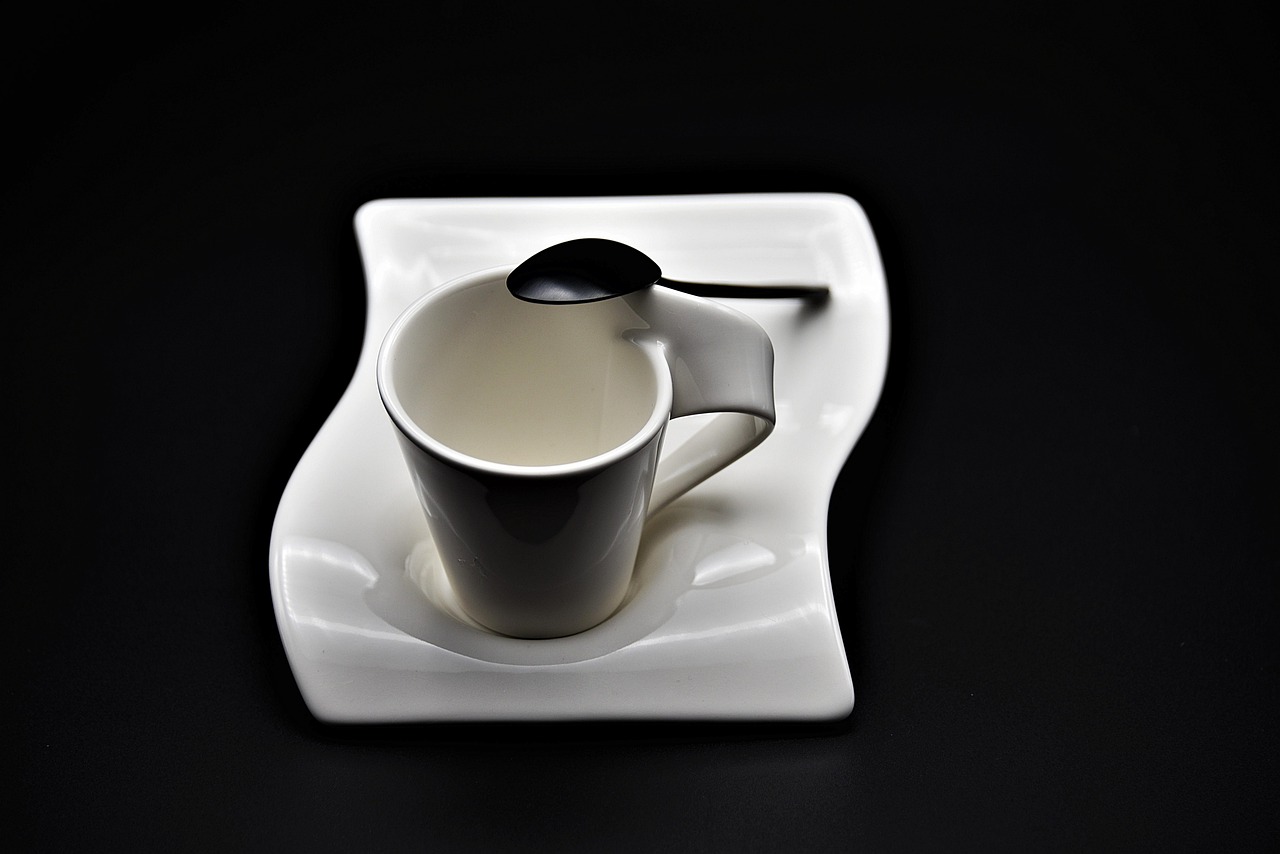
Essential Tools and Equipment
When embarking on your journey to create stunning decorative ceramics, having the right tools and equipment is absolutely essential. Think of it like cooking; you wouldn’t try to whip up a gourmet meal without the right utensils, would you? Similarly, in the world of ceramics, your tools will determine not only the ease of your crafting process but also the quality of your final product. So, let’s dive into the must-haves that will make your ceramic experience not just productive but enjoyable!
First and foremost, you’ll need a solid work surface. A sturdy table covered with a non-stick surface can be incredibly helpful. This is where the magic happens, so make sure it’s spacious enough to accommodate your materials and projects. Once you have your workspace set up, it’s time to gather your tools. Essential tools include:
- Clay Cutting Wire: This tool is perfect for slicing through blocks of clay with ease. It’s especially handy for managing larger pieces.
- Pottery Wheel: If you’re looking to try your hand at wheel-throwing, investing in a good pottery wheel can elevate your creations significantly.
- Hand Tools: A variety of hand tools—like ribs, scrapers, and loop tools—will allow you to shape and refine your pieces. Each tool serves a unique purpose in the shaping process.
- Rolling Pin: This is vital for flattening your clay into even slabs, which can then be used for building various forms.
- Glazing Brushes: Having an assortment of brushes will help you apply glazes smoothly and evenly, ensuring a professional finish.
In addition to these basic tools, you may also want to consider some optional equipment that can enhance your crafting experience. For instance, a kiln is essential for firing your ceramics, making them durable and ready for use. If you're just starting out and don’t want to invest in a kiln right away, many local art studios offer kiln services where you can fire your pieces for a small fee.
Don’t forget about safety equipment! A good apron can protect your clothes from clay and glaze stains, while a dust mask is crucial when working with dry materials to keep your lungs safe. Additionally, gloves can be a good idea when handling glazes, as some can be harsh on your skin.
To summarize, here’s a quick table that outlines the essential tools and their purposes:
| Tool | Purpose |
|---|---|
| Clay Cutting Wire | For slicing clay blocks |
| Pottery Wheel | For wheel-throwing projects |
| Hand Tools | For shaping and refining |
| Rolling Pin | For flattening clay |
| Glazing Brushes | For applying glazes |
With the right tools and equipment at your disposal, you’ll be well on your way to crafting beautiful ceramic pieces that can bring joy and warmth to your holiday celebrations. Remember, the journey of creating ceramics is just as important as the final product, so enjoy every moment of the process!
Q: Do I need a kiln to create decorative ceramics?
A: While a kiln is essential for firing your pieces, many local studios offer kiln services if you don't want to invest in one right away.
Q: What type of clay is best for beginners?
A: Earthenware clay is often recommended for beginners due to its ease of use and forgiving nature.
Q: Can I use regular paint on ceramics?
A: It’s best to use glazes specifically designed for ceramics to ensure durability and safety, especially if the pieces will be used for food.
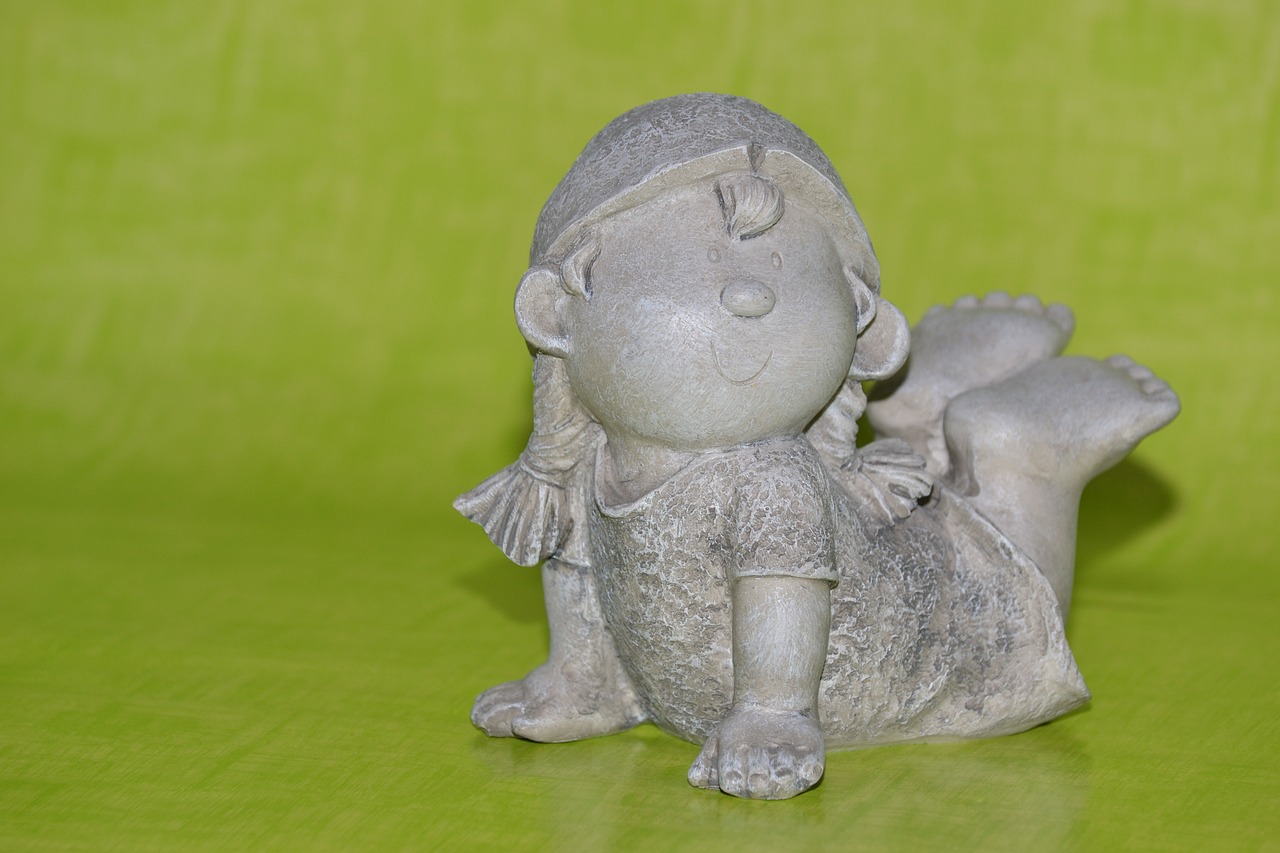
Design Inspiration for Holiday Ceramics
Finding inspiration for your ceramic designs can be one of the most rewarding aspects of the creative process. The holiday season is a time filled with warmth, joy, and a sense of togetherness, making it the perfect backdrop for crafting beautiful decorative ceramics. Whether you’re a seasoned potter or just starting out, the possibilities are endless. Think of your ceramics as a canvas where you can express your holiday spirit. What themes resonate with you? Are you drawn to traditional motifs or modern interpretations? Let’s explore some exciting ideas that can spark your imagination and get your creative juices flowing!
When it comes to holiday ceramics, traditional motifs can evoke a sense of nostalgia and warmth. Imagine crafting pieces adorned with classic designs like snowflakes, holly leaves, or Christmas trees. These motifs not only look beautiful but also carry sentimental value, reminding us of cherished memories from past celebrations. You could create a stunning set of dinnerware featuring delicate snowflakes, or perhaps a collection of ornaments that reflect your family’s unique traditions. The beauty of these designs lies in their ability to connect us with our roots while adding a festive touch to our homes.
On the other hand, if you’re looking to break away from convention, consider incorporating modern and abstract designs into your holiday ceramics. This approach allows you to experiment with shapes, colors, and textures that might not typically be associated with the season. Picture a sleek, minimalist vase in bold colors that contrasts beautifully with traditional holiday decor. Or think about using geometric patterns that play with light and shadow, creating a striking visual effect. The key is to let your imagination run wild and create pieces that reflect your personal style while still capturing the essence of the holidays.
To help you further, here are some themes and ideas to consider for your holiday ceramics:
- Nature-Inspired: Use earthy tones and organic shapes to create pieces that celebrate the beauty of winter.
- Whimsical Characters: Craft playful designs featuring Santa, reindeer, or snowmen that bring a smile to anyone's face.
- Festive Colors: Incorporate vibrant reds, greens, and golds into your creations to evoke the holiday spirit.
- Personal Touch: Consider customizing pieces with names or dates, adding a personal element to your gifts or decor.
As you brainstorm ideas, don’t forget to keep your audience in mind. If you’re creating pieces as gifts, think about what your loved ones would appreciate. Would they prefer a classic design that resonates with tradition, or would they be more excited about a contemporary twist? The beauty of crafting decorative ceramics lies in the ability to tailor your creations to the preferences of those who will cherish them.
In conclusion, the world of holiday ceramics is filled with endless possibilities. Whether you choose to embrace traditional motifs or venture into modern designs, the important thing is to let your creativity shine. Remember, each piece you create tells a story and adds a special touch to the holiday season. So gather your materials, find your inspiration, and get ready to make some unforgettable ceramic treasures!
Q: What type of clay is best for holiday ceramics?
A: Stoneware clay is a great choice for holiday ceramics due to its durability and ability to hold intricate designs. Earthenware is also popular for its vibrant colors and ease of use, but it may not be as sturdy.
Q: How can I add color to my ceramics?
A: You can use underglazes before glazing your pieces, or opt for colored glazes that enhance the final look. Experimenting with layering colors can also yield stunning results.
Q: Are there specific tools I need for shaping my ceramics?
A: Essential tools include a pottery wheel, various shaping tools, and a good set of carving tools. Investing in a quality set will make your crafting experience much smoother.
Q: How do I ensure my ceramics are food-safe?
A: Always use food-safe glazes and ensure your pieces are fired properly. Checking labels on glazes can help you confirm their safety for food use.

Traditional Holiday Motifs
When it comes to creating decorative ceramics for the holidays, incorporating can truly elevate your pieces and evoke a sense of nostalgia. These designs not only reflect the spirit of the season but also connect us to cherished memories and traditions. Think about the warmth of a cozy fireplace, the joy of family gatherings, and the excitement of gift-giving—these motifs can capture that essence beautifully.
Some of the most popular traditional motifs include snowflakes, Christmas trees, and ornaments. Each of these designs tells a story and brings a unique charm to your creations. For instance, snowflakes can be delicately painted or embossed onto your ceramics, symbolizing the beauty of winter and the uniqueness of each flake. Imagine a beautifully glazed bowl adorned with intricate snowflake patterns—it's like holding a piece of winter magic in your hands!
Christmas trees, on the other hand, are a classic symbol of the holiday season. You can get creative with this motif by incorporating various colors and textures. A ceramic plate featuring a hand-painted Christmas tree, complete with vibrant ornaments and twinkling lights, can serve as a stunning centerpiece for your holiday table. It's a delightful way to celebrate the season and showcase your artistic flair.
Ornaments are another fantastic motif that can add a festive touch to your ceramics. Consider crafting a series of small decorative plates or bowls, each featuring a different ornament design. You can use a variety of colors and patterns to create a cohesive set that captures the spirit of the holidays. These can be displayed on a shelf or gifted to loved ones as a thoughtful reminder of the season.
Incorporating these traditional motifs into your ceramic creations not only enhances their aesthetic appeal but also allows you to connect with the rich history and cultural significance of the holidays. Whether you choose to stick with classic designs or add your personal twist, the key is to let your creativity shine through. After all, the holidays are about celebrating joy, love, and togetherness—what better way to express that than through beautiful, handcrafted ceramics?
As you embark on your ceramic journey, remember that the beauty of these traditional motifs lies in their ability to evoke emotion and spark joy. So grab your tools, let your imagination run wild, and start creating pieces that will be cherished for years to come!

Modern and Abstract Designs
When it comes to creating decorative ceramics for the holidays, embracing can add a fresh and exciting twist to your festive decor. These styles allow you to break free from the traditional motifs and explore a world of creativity that resonates with contemporary aesthetics. Imagine a vibrant ceramic piece that embodies the essence of the holidays without being tied to conventional patterns. It’s like painting with a broader brush, where the only limit is your imagination!
One of the most appealing aspects of modern designs is their ability to evoke emotions through color and form. Think about how a simple bowl can transform into a statement piece just by incorporating bold colors and unique shapes. You might consider using geometric patterns, fluid lines, or even asymmetrical designs to create ceramics that stand out. For instance, a sleek, black vase with a splash of gold or a bright, multicolored platter can serve as the centerpiece of your holiday table, sparking conversations and admiration.
To dive deeper into the world of modern ceramics, you can explore various techniques that enhance the abstract nature of your designs. Consider the following approaches:
- Color Blocking: This technique involves using solid blocks of color to create striking contrasts. Imagine a plate divided into sections of teal, coral, and mustard yellow, each section radiating its own vibrancy.
- Textured Surfaces: Experimenting with textures can add depth to your pieces. Incorporate techniques like carving or adding mixed media elements to give your ceramics a tactile quality that invites touch.
- Layering Glazes: Layering different glazes can produce stunning effects. This method allows you to create depth and complexity, making your pieces visually captivating.
Incorporating abstract designs also means embracing imperfection. The beauty of modern ceramics often lies in their quirky, unexpected elements. Think of a piece that seems to defy symmetry or a bowl with an uneven rim. These characteristics can evoke a sense of playfulness and creativity, reminding us that art is often about expression rather than perfection.
When designing your holiday ceramics, consider how modern and abstract designs can reflect your personal style. The key is to let your creativity flow freely. You might find inspiration in nature, architecture, or even your favorite artwork. For example, the curves of a leaf or the lines of a building can translate into beautiful ceramic forms. By looking at the world through an artistic lens, you can create pieces that are not just decorations but also conversations starters.
Ultimately, the goal of incorporating modern and abstract designs into your holiday ceramics is to create pieces that resonate with you and your loved ones. Whether you’re crafting for your home or as gifts, these unique creations can bring joy and a sense of individuality to your celebrations. So, gather your materials, unleash your imagination, and let the spirit of modern artistry guide your hands!
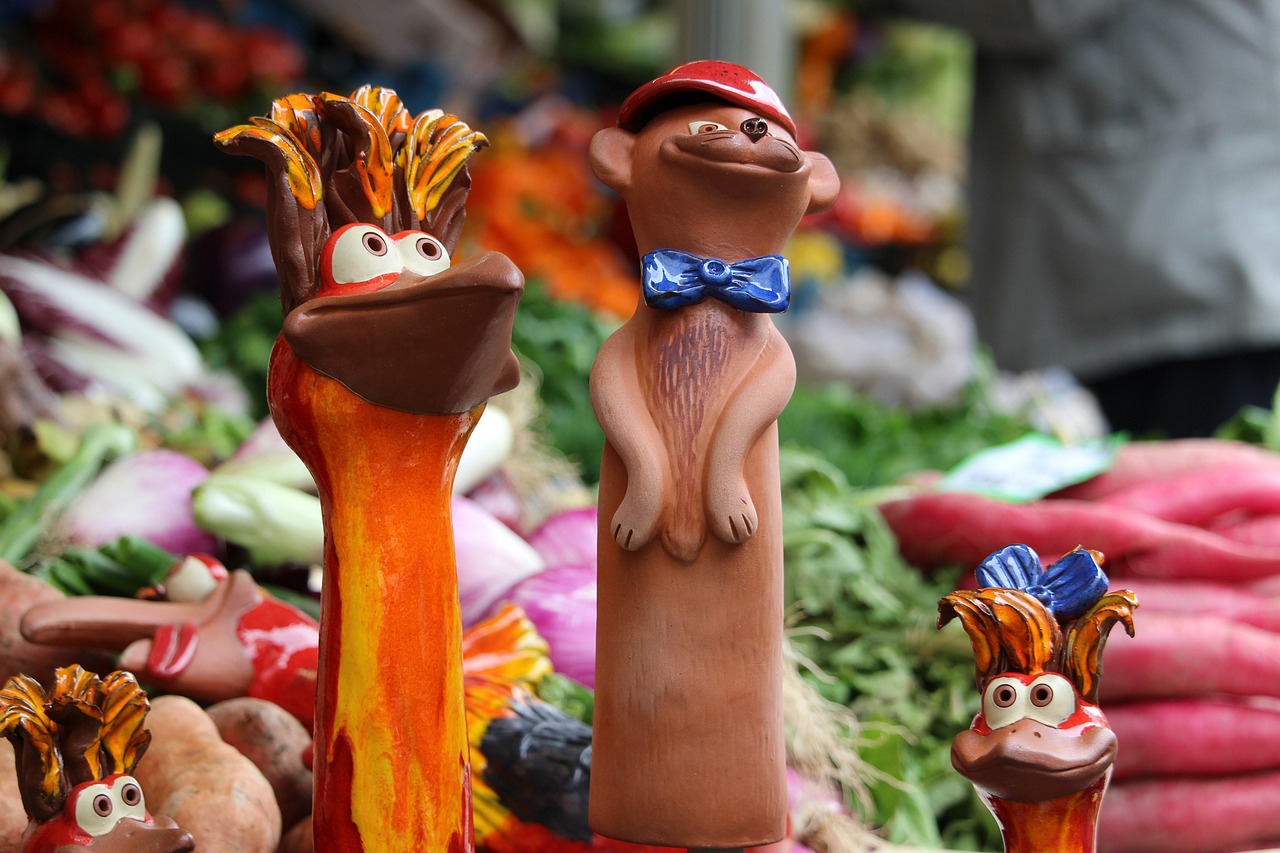
Techniques for Shaping and Molding
When it comes to creating stunning decorative ceramics, mastering the art of shaping and molding is essential. Whether you're a novice or an experienced artisan, understanding these techniques can elevate your holiday creations from ordinary to extraordinary. There are several methods to explore, each offering unique possibilities for your artistic expression. Let’s dive into some of the most popular techniques that can help you shape your clay into beautiful holiday pieces.
One of the most traditional methods is hand-building. This technique allows you to manipulate the clay using your hands and simple tools, which can be incredibly satisfying. You can create various forms like pinch pots, coil pots, or slab constructions. For instance, pinch pots are made by pinching the clay into shape, while coil pots involve rolling out long strands of clay and stacking them to form a vessel. The beauty of hand-building lies in its flexibility; you can easily add personal touches to your pieces, making them truly unique.
On the other hand, if you’re looking for precision and uniformity, wheel-throwing might be the way to go. This technique involves using a pottery wheel to spin the clay while you shape it with your hands or tools. It can be a bit challenging at first, but with practice, you’ll find it incredibly rewarding. Wheel-thrown pieces often have a smooth, professional finish that can be enhanced with creative glazing techniques. Imagine crafting a perfectly symmetrical bowl or vase that could serve as a stunning centerpiece during your holiday gatherings!
Another fascinating technique is mold-making. This involves creating a mold from a model and then using that mold to produce multiple identical pieces. Mold-making is particularly useful if you want to create a series of holiday ornaments or decorations that share a common theme. You can use materials like plaster or silicone to create your molds, allowing for intricate designs that would be challenging to achieve by hand. The advantage here is that you can replicate your favorite designs effortlessly, ensuring that each piece is consistent in quality and appearance.
For those who enjoy a bit of experimentation, consider using mixed media techniques. This approach allows you to combine clay with other materials, such as glass or metal, to create striking contrasts and textures. Imagine adding colorful glass shards to a ceramic piece that catches the light beautifully, or incorporating metal accents that provide a modern twist to traditional designs. Mixed media can truly make your holiday ceramics stand out and spark conversations among your guests.
As you explore these shaping and molding techniques, remember that practice makes perfect. Don’t be afraid to make mistakes; they often lead to the most unexpected and delightful results. Moreover, it’s essential to keep your workspace organized and your tools handy. Here’s a quick table to remind you of the essential tools you might need for each technique:
| Technique | Essential Tools |
|---|---|
| Hand-building | Fingers, rolling pin, clay knife |
| Wheel-throwing | Pottery wheel, rib tool, sponge |
| Mold-making | Plaster, silicone, model |
| Mixed Media | Adhesives, additional materials (glass, metal) |
In conclusion, whether you choose hand-building, wheel-throwing, mold-making, or mixed media, each technique offers a unique pathway to create beautiful holiday ceramics. So roll up your sleeves, get your hands dirty, and let your creativity flow. The joy of crafting your decorations will not only enhance your holiday spirit but also provide a personal touch that your friends and family will cherish for years to come.
Q: What type of clay is best for beginners?
A: Earthenware clay is often recommended for beginners due to its ease of use and forgiving nature. It fires at lower temperatures and is perfect for decorative pieces.
Q: How can I ensure my ceramics are food-safe?
A: To make your ceramics food-safe, use non-toxic glazes and ensure they are fired to the appropriate temperature. Always check the manufacturer's guidelines for specific products.
Q: Can I paint my ceramics after glazing?
A: It’s best to avoid painting over glazed ceramics unless you use special paints designed for ceramics. Most regular paints won’t adhere well and may chip off.
Q: How do I clean my ceramic tools?
A: Clean your tools with water before the clay dries. For stubborn clay, you can use a sponge or a stiff brush to remove any residue.
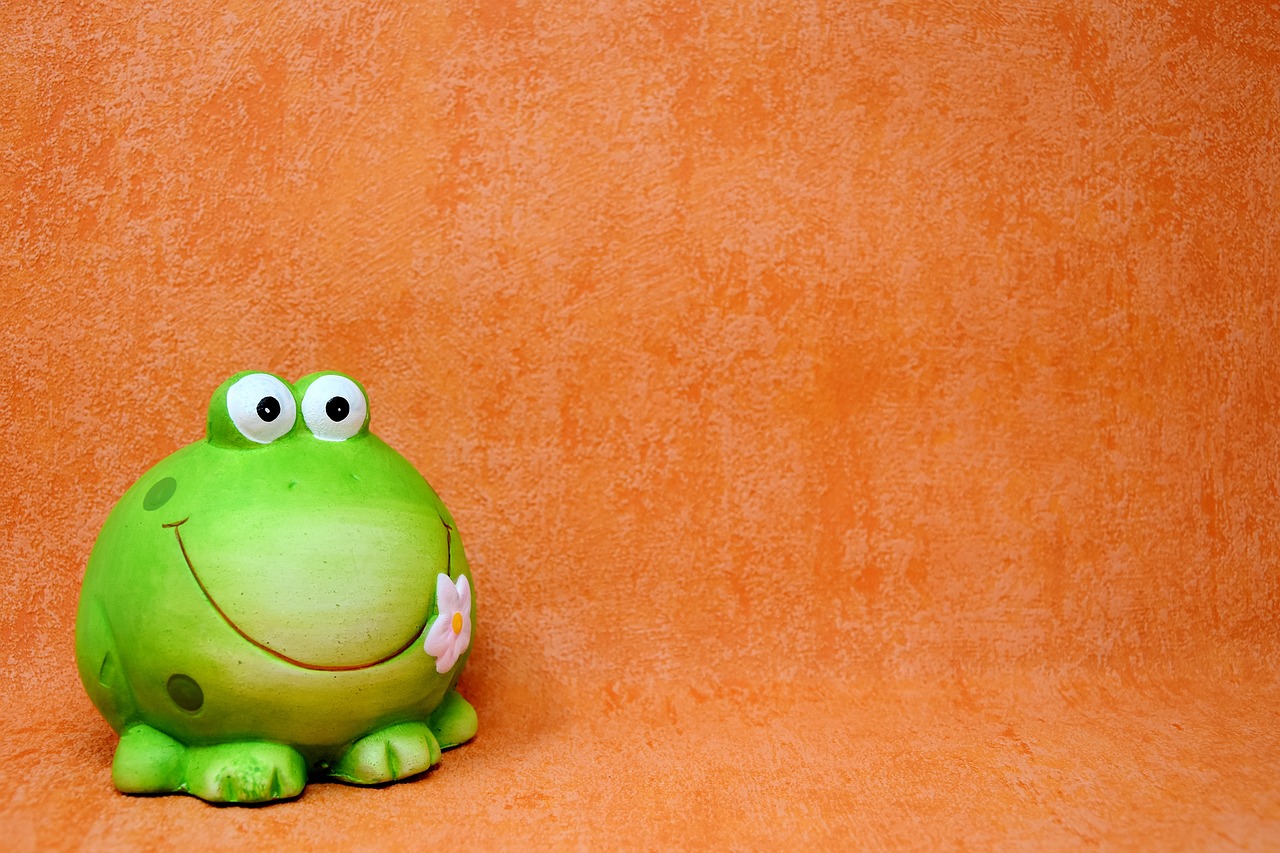
Glazing and Finishing Touches
When it comes to creating decorative ceramics for the holidays, the glazing process is where the magic truly happens. It's not just about adding color; it's about enhancing the beauty and durability of your creations. Imagine your beautifully shaped ceramic piece transformed into a vibrant work of art that catches the light and reflects the joy of the season. But how do you achieve that stunning finish? Let’s dive into the world of glazing and explore some techniques that can elevate your holiday ceramics.
First and foremost, understanding the types of glazes available is essential. There are glossy, matte, and satin finishes, each providing a different look and feel to your ceramic pieces. Glossy glazes are perfect for a shiny, eye-catching appearance, while matte finishes offer a more subdued and sophisticated look. Satin glazes, on the other hand, strike a balance between the two, giving your ceramics a soft sheen that can be very appealing. Choosing the right glaze can significantly impact the overall aesthetic of your holiday decorations.
Once you've selected your glaze, the application method is crucial. You can apply glaze using various techniques such as dipping, pouring, brushing, or spraying. Each method has its own advantages and can produce different effects. For instance, dipping provides a uniform coat, while brushing allows for more control and creativity. If you’re feeling adventurous, consider using a combination of techniques to create unique patterns and textures. Just remember to practice on test pieces first to avoid any surprises!
Moreover, don’t underestimate the importance of layering glazes. By applying multiple layers of different glazes, you can achieve stunning visual effects. This technique is especially effective for creating depth and dimension in your designs. For example, a base layer of a dark color can be topped with a lighter glaze to create a beautiful contrast, reminiscent of snow blanketing a winter landscape. Experimenting with layering can lead to unexpected and delightful results.
Once your pieces are glazed, it’s time for firing. The firing process is where the glaze transforms, fusing with the clay and creating a durable finish. Make sure to follow the firing instructions specific to the glazes you’re using, as temperatures can vary. It’s like baking a cake; the right temperature and timing are crucial for achieving the perfect outcome. After firing, your ceramics will not only look stunning but will also be functional and long-lasting, perfect for holiday gatherings.
Finally, don’t forget about the finishing touches. Adding embellishments such as gold luster or metallic accents can elevate your pieces even further. These details can catch the light beautifully and add a touch of elegance, making your ceramics stand out as centerpieces during the holiday season. Just a small brush of luster can transform a simple design into something truly spectacular!
In conclusion, glazing and finishing touches are where your creativity can shine. By selecting the right glazes, mastering application techniques, and adding those special details, you can create holiday ceramics that are not only visually stunning but also meaningful. So roll up your sleeves, get your hands dirty, and let your imagination run wild as you create beautiful pieces that will bring joy to your holiday celebrations.
- What type of clay is best for glazing? - Stoneware and earthenware are great options, as they hold glaze well.
- Can I glaze ceramics after they have been fired? - Yes, you can apply glaze to bisque-fired ceramics, but they must be fired again afterward.
- How do I avoid glaze runs? - Ensure you apply an even coat and control the thickness of the glaze.
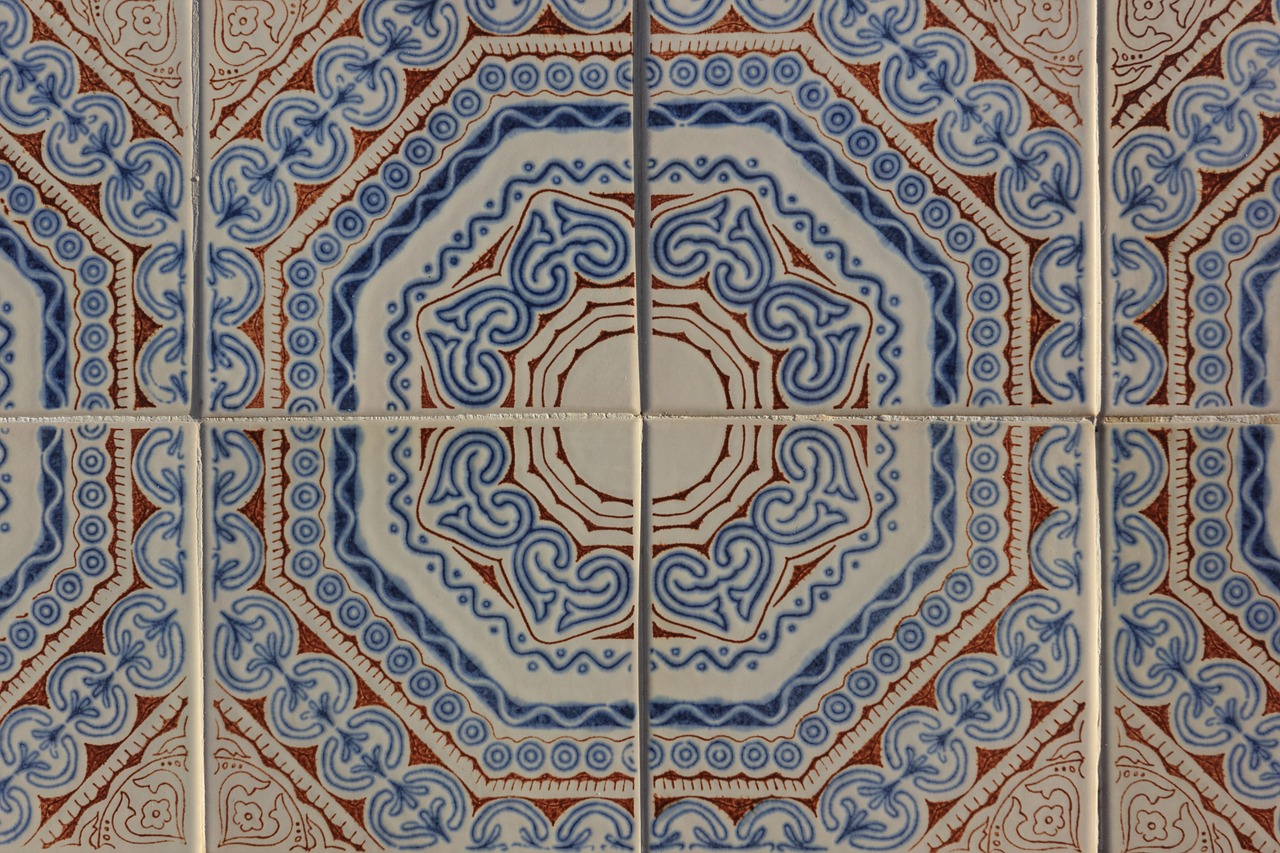
Displaying and Gifting Your Creations
Once you've put in the hard work to create your stunning decorative ceramics, the next exciting step is figuring out how to showcase or gift them. After all, what's the point of crafting these beautiful pieces if they don't get the recognition they deserve? Whether you're looking to adorn your home with your creations or surprise a loved one with a heartfelt gift, there are plenty of creative ways to do so. First, consider how to display your ceramics in a way that highlights their unique features. You can use floating shelves to create an eye-catching gallery wall, or simply place them on a dining table to add a festive touch during holiday gatherings. The key is to make sure they catch the light just right, so don’t shy away from experimenting with different placements.
When it comes to gifting your ceramics, presentation is everything. Think about wrapping your pieces in a way that complements their style. For instance, if you've made a rustic vase, consider using natural materials like burlap or twine for wrapping. On the other hand, a sleek, modern piece might look stunning in a minimalist box adorned with a simple ribbon. Don't forget to include a personal touch, such as a handwritten note explaining the inspiration behind your creation; this adds an extra layer of meaning to your gift.
If you're looking for ideas on how to display your ceramics, here are some suggestions to spark your creativity:
- Use a Display Cabinet: A glass-front cabinet can protect your pieces while allowing them to shine.
- Table Centerpieces: Use your ceramics as a focal point on your dining or coffee table.
- Seasonal Displays: Change your displays with the seasons, highlighting different pieces for different holidays.
- Gift Baskets: Combine smaller ceramics with other goodies in a gift basket for a delightful surprise.
Lastly, don’t underestimate the power of social media! Share pictures of your finished pieces on platforms like Instagram or Pinterest. Not only can this inspire others to try their hand at ceramics, but it can also attract attention to your work if you're considering selling your creations. With the right lighting and angles, your ceramics can look even more stunning online, and who knows? You might just spark a trend!
Q: How do I properly care for my ceramic pieces?
A: Most ceramic pieces can be cleaned with a soft cloth and mild soap. Avoid harsh chemicals that could damage the glaze. If your ceramics are food-safe, make sure to follow any specific care instructions related to food use.
Q: Can I use my decorative ceramics for food?
A: It depends on the glaze used. Always check if your ceramics are labeled as food-safe before using them for serving food or beverages.
Q: What’s the best way to wrap ceramics for gifting?
A: Use bubble wrap for protection, then place the wrapped piece in a sturdy box. You can add decorative elements like tissue paper or fabric for a beautiful presentation.
Frequently Asked Questions
- What type of clay should I use for holiday ceramics?
Choosing the right clay is essential for your projects. For decorative ceramics, earthenware is a popular choice due to its ease of use and vibrant color options. However, stoneware is more durable and can withstand higher temperatures, making it ideal for functional pieces. If you're looking for a smooth finish, porcelain is a great option, but it requires more skill to work with.
- What are the essential tools for creating ceramics?
To kickstart your ceramic journey, you’ll need a few basic tools. A potter's wheel is fantastic for shaping, while hand-building tools like rib tools, needles, and rolling pins are essential for creating unique forms. Don't forget about glazing supplies such as brushes and sponges! Having these tools ready will make your crafting process smoother and more enjoyable.
- How can I find inspiration for my ceramic designs?
Inspiration can come from anywhere! Look around during the holidays—nature, decorations, or even your favorite holiday movies can spark ideas. You can also explore traditional motifs like snowflakes and Christmas trees, or go for something modern and abstract. Pinterest and Instagram are treasure troves of creative designs that can help you find your unique style.
- What techniques should I learn for shaping ceramics?
Mastering shaping techniques is crucial! Start with hand-building, which allows you to create forms without a wheel. Once you're comfortable, try wheel-throwing for more precise shapes. Each method has its charm, and experimenting with both can lead to stunning results. Don't be afraid to play around and see what works best for you!
- How do I apply glaze to my ceramics?
Applying glaze is an art in itself! You can use various techniques like dipping, brushing, or spraying to achieve different effects. Make sure to apply a consistent layer to avoid drips and uneven coverage. Always test your glazes on sample pieces before using them on your final creations to ensure you love the outcome!
- What are some creative ways to display or gift my ceramic creations?
Displaying your ceramics can be as fun as making them! Consider using stands or shelves to showcase your pieces. For gifting, think about wrapping your ceramics in beautiful paper or placing them in decorative boxes. Personal touches, like a handwritten note, can make your gifts even more special and memorable.



















